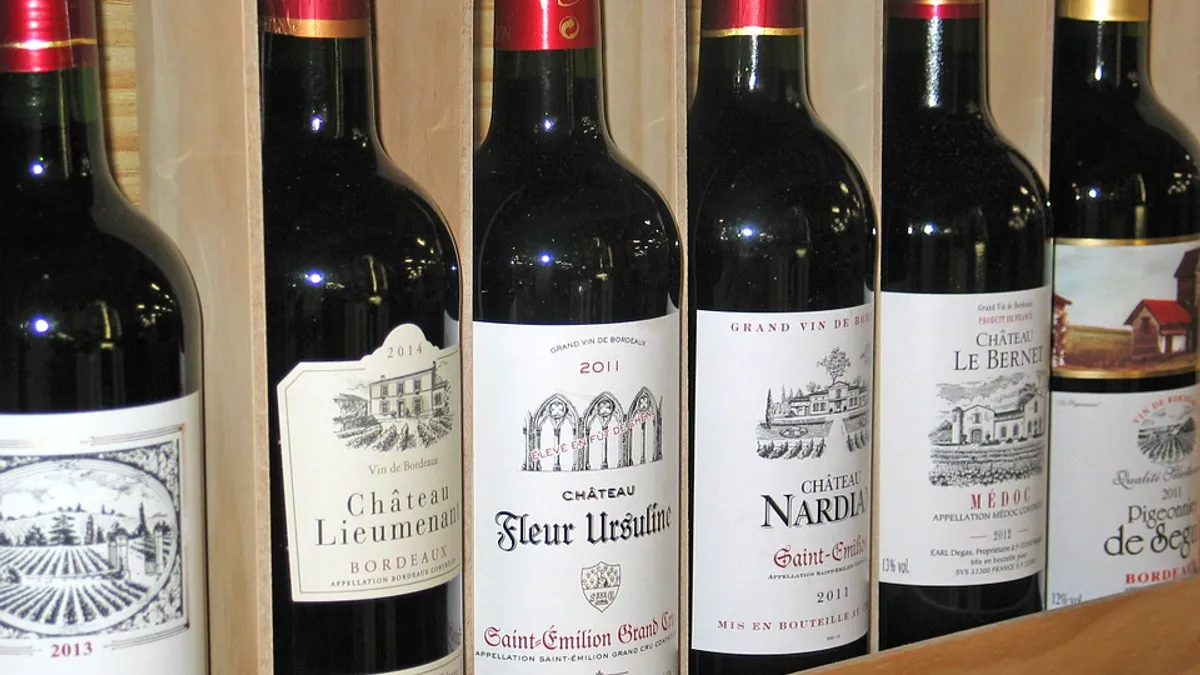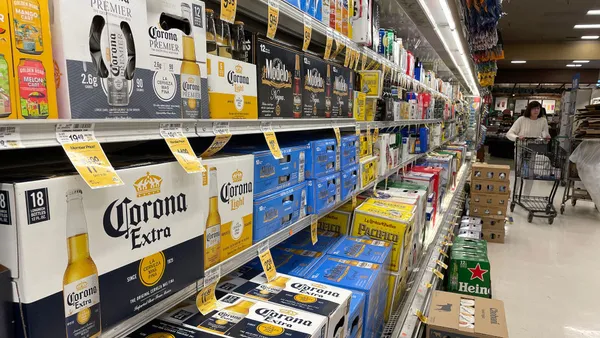Dive Brief:
- Grocers like Target and Walmart are pushing out private label wines in an effort to elevate their image and their assortments, according to CNN. Walmart released Winemakers Selection in about 1,100 stores across the country. The line includes wine sourced from California, Italy, and France. Since the launch of its $11 bottles, Walmart has seen a bump in sales and plans to release more offerings at that price point in the spring.
- Target introduced it's $5 California Roots brand last year and added a rosé this year. The retailer also sells Yes Way Rosé, which went viral on Instagram goes for $12.99 a bottle. The retailer says alcohol is its fastest-growing unit within its food and drinks division last year. To keep up with demand, the retailer is applying for more liquor licenses and hopes to offer alcohol in 80% of its stores by the end of 2018.
- Meanwhile, other grocers like Kroger, Meijer and H-E-B are betting on home delivery to stand out in the category. Kroger recently partnered with Drinks Holdings Inc. to deliver wine to 14 states, while Meijer recently expanded its alcohol delivery service. Online alcohol sales grew 33% last year, according to Slice Intelligence.
Dive Insight:
Blame it on Two-Buck Chuck.
Trader Joe’s, known for its two dollar wine often referred to by the now-famous moniker, has won multiple awards and earned a cult-like following for its wines over the years — motivating big-name grocers and discounters like Aldi and Lidl alike to offer their own private label red and whites.
Walmart and Target have jumped into the trend with gusto, but they'll have to contend with discounters Aldi and Lidl, which have done an admirable job positioning their wine as premium selections. Earlier this year, Lidl won more than 100 medals at the International Wine Competition in Los Angeles and while an $8 Aldi rose last year won a silver award at the renowned International Wine Challenge.
But how are retailers able to sell wines for so cheap? For one, most of the wines are grown in the California region which would be cheaper to import than overseas. In Trader Joe’s case, its Charles Shaw wine is grown in a vineyard with cheaper real estate costs than more prestigious vineyards like Napa Valley. The wine is often fermented in oak chips rather than an oak barrel, the company uses a cheaper cork and produces in large quantities. All of which contribute to lower prices.
Grocers like Kroger and H-E-B, meanwhile, are betting that wine's ability to boost basket size and draw in more affluent consumers will extend to e-commerce. Online wine sales have grown far more rapidly, with alcohol delivery revenue up more than 32% in 2017, according to data from Slice Intelligence.
Overall, wine sales are expected to grow 6% annually through 2023, according to Zion Market Research and wine sales can help retailers draw in additional revenue. According to Nielsen, the average consumer spends $47 per trip to the grocery store but spends an average of $75 when they do purchase wine. It's also worth noting that millennials are one of the driving forces behind this trend. According to Wine Spectator, millennials drank 42% of all the wine consumed in the U.S.













